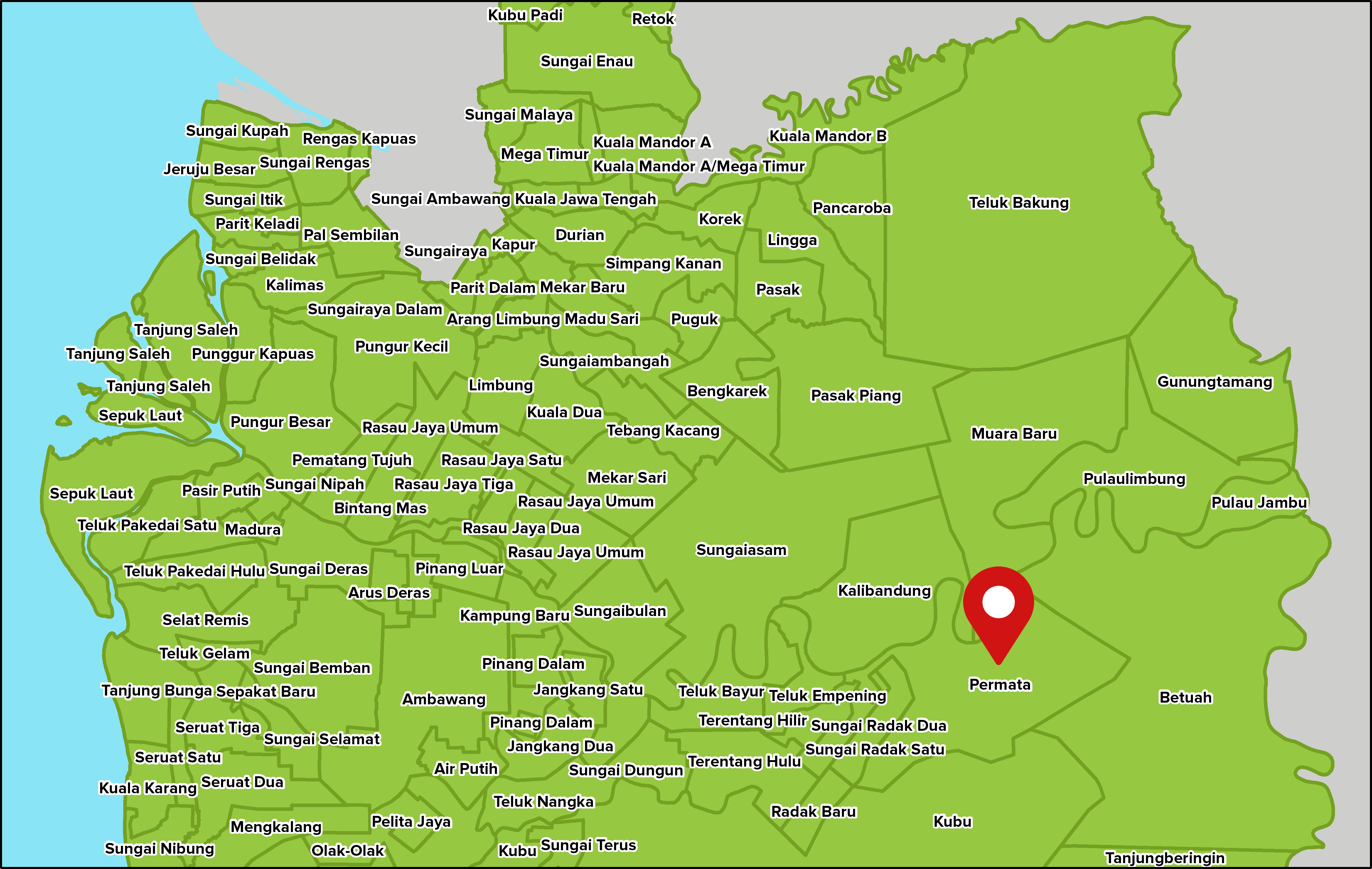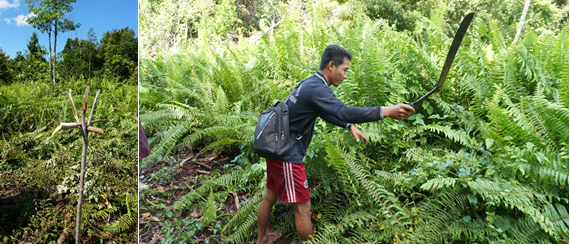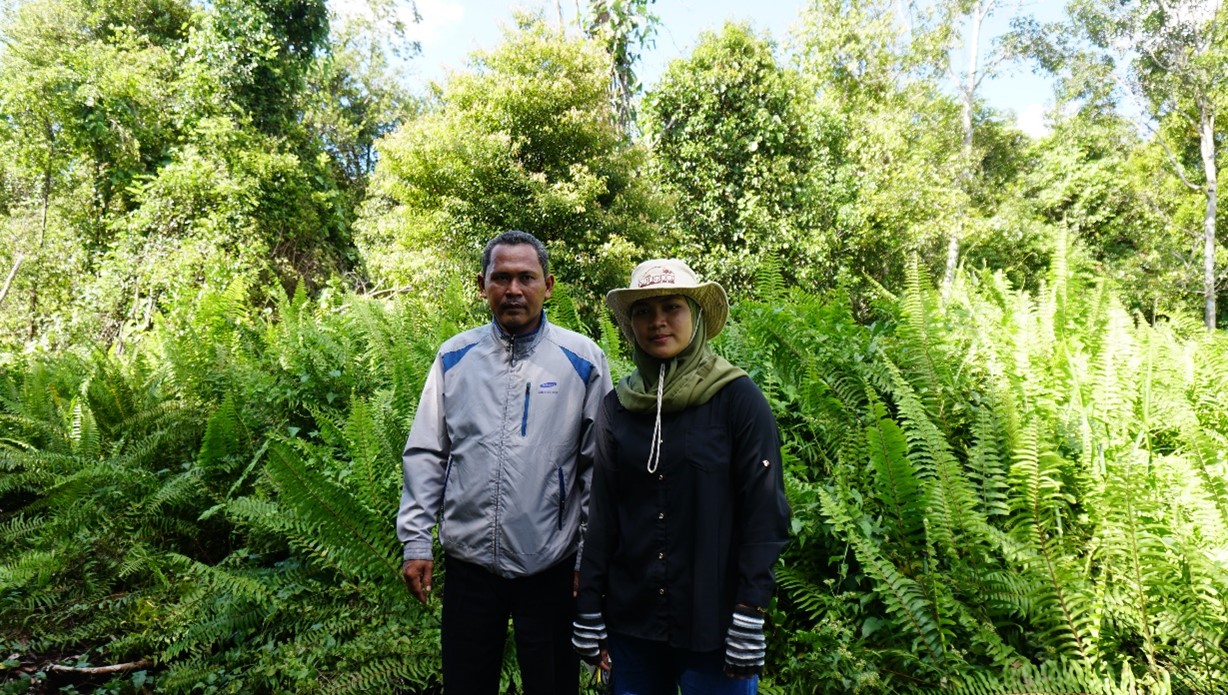Stories
Tumbang Imas: Peat-friendly Land Clearing Practices from Permata Village
Sep 20, 2022 by Dede Sulaeman
We were very happy to hear that travel restriction due to the COVID-19 pandemic had begun to be lifted. Seeing the Kapuas river and the activities carried out fulfilled our longing for field activities. The restrictions imposed due to the pandemic disrupted the activities carried out under the auspices of the People for Peat consortium which require a lot of field visits, such as the Peat Ranger Training that we conducted in West Kalimantan some time ago.
After spending the first and second day indoors discussing sustainable peatland management, we had the opportunity to visit the training participants’ village on the third day, i.e. Permata Village, Terentang Sub-District, Kubu Raya District, West Kalimantan Province. The village could be reached by a one-hour journey by car followed by a one-hour journey by speed boat if we depart from Pontianak City.
We found it interesting when one of the training participants shared that he and the other villages implemented land clearing without burning (PLTB). Edi Haryanto, a transmigrant from Brebes, shared that the residents of Permata Village are starting to shift away from the practice of land clearing by burning.

Permata Village is one of the villages covered by the central government's transmigration program. Determined to live independently, Edi started life as a transmigrant in this village in 2012. The 2.5 hectare business area, 0.5 hectare yard, a house, and the guarantee that his basic needs for the first year would be provided by the government through the transmigration program were attractive enough to make Edi and his family move to this village. Over time, Edi now owns 8 hectares of land in Setia Jaya Hamlet, Permata Village. Edi is very familiar with the negative impact of burning for land clearing. Edi had previously practiced unsustainable peatland management, but now he and the other villagers no longer practice burning for a number of reasons.
First, the threat of punishment from the government has been quite effective in suppressing the practice of burning land in this village. Second, the community has realized that burning land can have a negative impact in the long term. They found that the benefit of 'fertile land' after burning was only true at the beginning of the crop’s growth cycle (about one year after burning). Afterward, the growth of the crops was not optimal. This is certainly in line with scientific evidence that land burning will only reduce soil acidity in the short term and will stop along with the loss of ashes from burning. Moreover, burning peatlands will have a lot of negative impacts on the biophysical condition of the peatland. Third, increasing public awareness about sustainable peatland management through training has contributed to the reduction of land burning practices.
On the contrary, the residents of Permata Village practice a peat-friendly land clearing method, i.e. 'tumbang imas'. Tumbang imas means uprooting trees (annual crops) and cutting (imas) ferns and other shrubs in the process of land clearing. Tumbang Imas starts by putting up stakes around the land and cutting crops along the sides of the land. After that, the ferns and other shrubs will be cut (imas) and this will be followed by the cutting of annual crops. Edi has implemented this in his 2-hectare business area. Other communities also implement the same practice, approximately 10 hectares of land are still being cleared using the tumbang imas method.

In terms of time, the tumbang imas method does require a longer time compared to other land clearings without burning (using an excavator) which only takes one day to clear a one-hectare area. Tumbang Imas is usually carried out by a group of four people and could take up to two weeks. This does not include land preparation for planting due to a large number of branches and residue from cutting shrubs. Tumbang imas is then followed by lorong pancang, i.e. making tunnels for planting points, the distance between the tunnels depends on the distance between crops. The crop residue from tumbang imas is placed between the stakes until they rot, so they can become natural fertilizers for the soil. Lorong pancang takes almost as long as tumbang imas, hence considering the time required, it would be more effective to use an excavator. However, the use of excavators can have negative consequences, namely soil compacting and peat soil subsidence.
In addition, excavators are also more costly, i.e. approximately Rp 15 million for a one-hectare land area. On the other hand, tumbang Imas only costs Rp 4.8 million for the wages of four workers (or twice as much as lorong pancang). Therefore, from a cost perspective, Tumbang Imas is more effective than using an excavator.
Considering the matters above, the practice of peat-friendly land clearing using the tumbang imas method should be applied more and the practice of peatland clearing by burning should be abandoned. Edi has a message for those who are still clearing land by burning, he encourages them to shift away from this practice because it can have a negative impact.
"Communities who are still clearing land by burning should no longer do so because there will be negative impacts for us in the future.” – Edi Haryanto

Edi Haryanto and Maharani, participants of Peat Ranger Training (peat rangers). Background: Business area land is provided by the transmigration program.